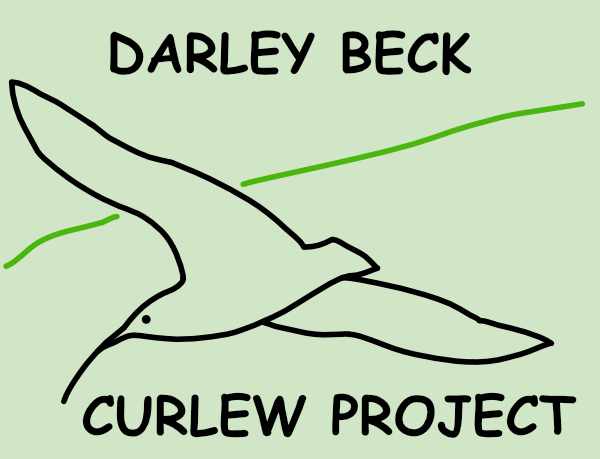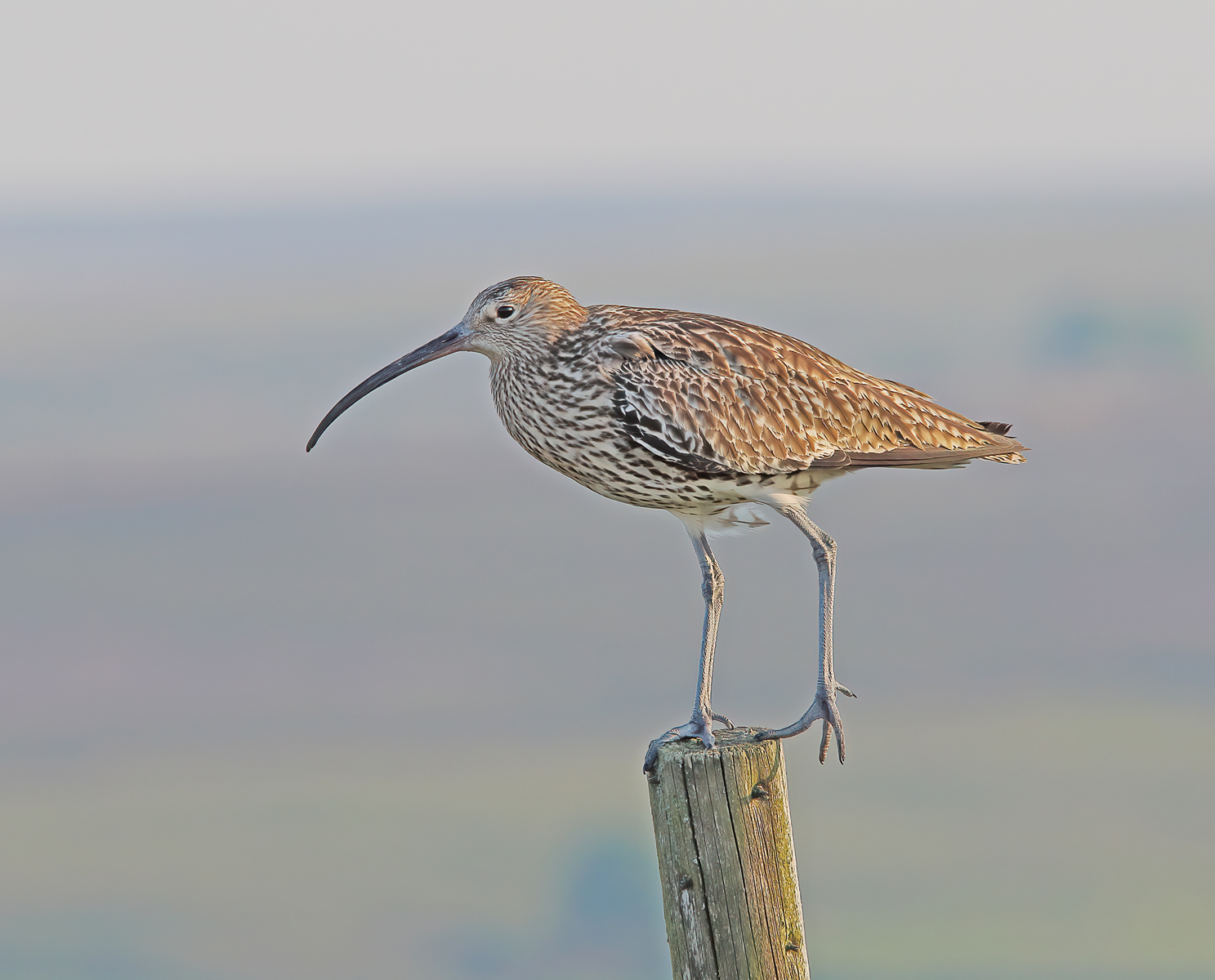About the Darley Beck Curlew Project
The main area of interest is approximately 400 hectares of permanent
grassland/stock farms in Nidderdale AONB. The farms are part of the
catchment of Darley Beck which includes an area known as Dacre
Pasture. Most of this 400 hectares is improved grassland, originally used
for dairy farming, with a smaller proportion of rough grazing on the
steeper land. Because of the decline of curlew populations in the
lowlands this improved grassland is no longer considered typical curlew
habitat but it still seems to have a large population of curlews that
establish breeding territories each Spring.
Unfortunately, their breeding success is usually poor and the grassland in
this part of the catchment of Darley Beck seems to be acting as a
population sink for curlews. Assuming that they are breeding successfully
on the local moorland, which is only three miles away, the spill- over of
young curlews into the grassland of the valleys does not seem to be
contributing to an increase in the curlew population of the wider farmed
countryside. Curlews only hatch one brood per year and each pair needs
to produce 0.5 fledged chicks every year to maintain their population.
This surprisingly low replacement number is due to the fact that, once
fledged, most curlews survive for 10-20 years. Research carried out by
Curlew Country on the Shropshire/ Powys border, a landscape similar to
Dacre Pasture, found curlews in that area were only hatching 0.1 chicks
per pair per year and their population was facing a cliff-edge collapse.
Our curlew population could be facing the same disaster.
The first stage of this project is to determine the breeding success in the
grassland of the valleys. We have obtained funds to recruit and train a
corps of community birdwatchers who, during the first half of 2022, will
map the habitat in the project area and try to determine the breeding
success of curlews. They will carry out surveys of curlew numbers, plot
their breeding territories, try to identify their nests and record their
breeding success. During this first year the farmers and landowners have
been asked to sign up for the project by allowing the birdwatchers to visit
their land for these purposes.
The Northern Upland Chain group which covers the Pennines from North
Yorkshire to Northumberland recognises that the main challenges faced
by curlews breeding in the UK are modern farming methods, predation
and forestry. Stage two of the project in Autumn 2022 will be to assess
from the survey results the relative impact of these three factors on the
curlews’ breeding success. The results and conclusions will be discussed
with the individual farmers and landowners to determine if there are
changes that they could make to the management of their grassland to
benefit breeding curlews. The habitat mapping may also allow
suggestions about changes to other parts of their land that could benefit
curlews. The need for selective predator control (mainly carrion crows
and foxes) would also be kept under review.
Serious funding from FiPL would then be required for 2023 to pay
farmers who agree to make desired changes to their agricultural
practices and application for this would be made later in the Autumn of
2022.
The breeding success of curlews would continue to be assessed annually
and further discussions with farmers would take place, an iterative
process. If the project is achieving its objectives in conserving grassland
curlews, farmers and landowners in the remaining catchment of Darley
Beck would be encouraged to join the Farmers’ Cluster. Hopefully, when
FiPL funding ceases and the ELM scheme commences, membership of
the Darley Beck Curlew Project will allow farmers to enter the mid tier
(Local Nature Recovery) of ELM scheme.


